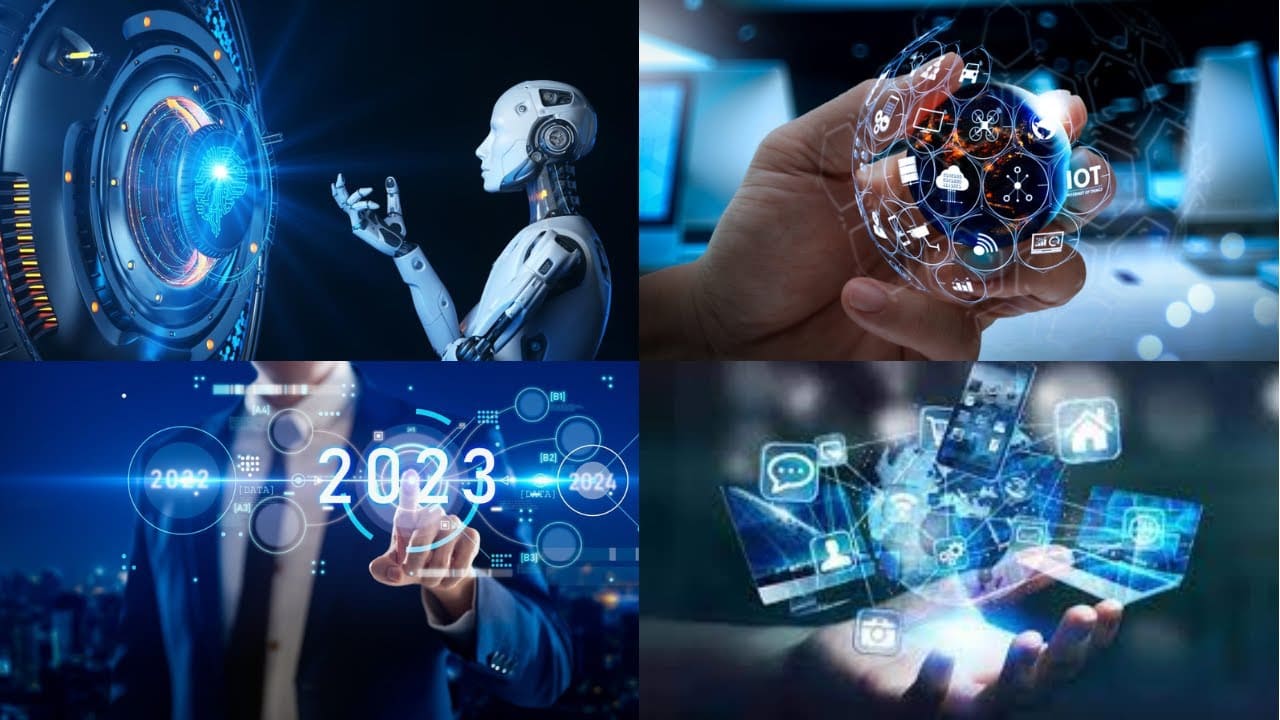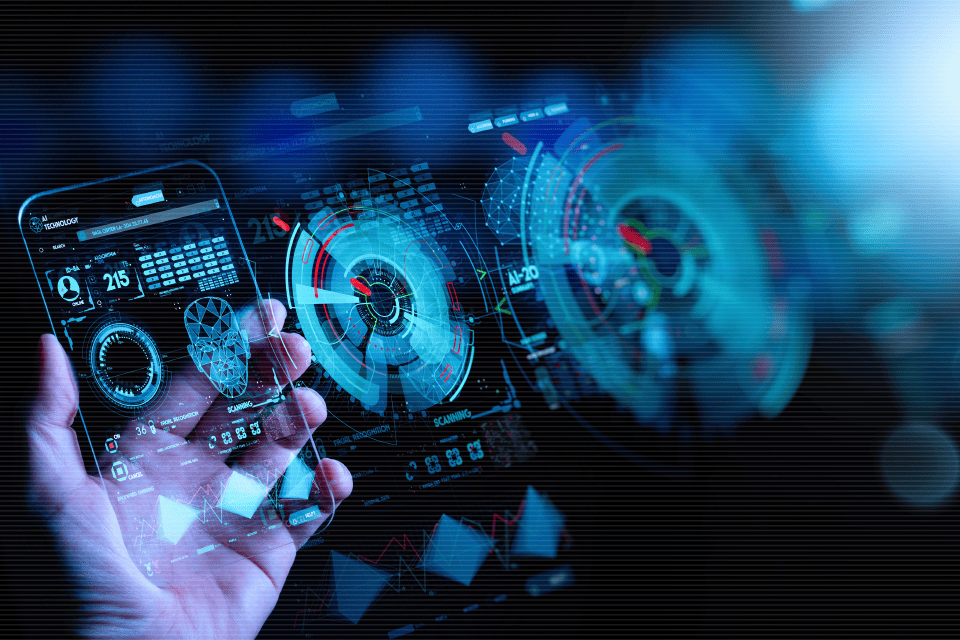Technology continues to evolve at an unprecedented pace, driving innovation across industries and transforming our daily lives. From artificial intelligence to quantum computing, the innovations of today are laying the foundation for tomorrow’s breakthroughs. Here are 10 cutting-edge technologies that are set to shape the future and redefine what’s possible in the coming decades.
1. Artificial Intelligence (AI) and Machine Learning (ML)
Artificial intelligence (AI) and machine learning (ML) are leading the charge in technological innovation, reshaping industries from healthcare to finance. AI, with its ability to mimic human cognition, and ML, which allows systems to learn from data and improve over time, are key drivers of automation, smart decision-making, and personalized experiences.
- Healthcare: AI-powered diagnostic tools can analyze medical imaging, detect diseases like cancer at early stages, and recommend treatments. ML algorithms also help develop more effective, personalized medications.
- Autonomous Systems: Self-driving cars and drones leverage AI and ML to make real-time decisions, navigate complex environments, and ensure safety.
- Natural Language Processing (NLP): AI-powered systems like chatbots and virtual assistants (e.g., Siri, Alexa) are becoming more human-like, capable of understanding and responding to complex language inputs.
The future of AI is moving toward Artificial General Intelligence (AGI), where machines can perform any cognitive task a human can. This leap could revolutionize industries, making systems even more efficient and autonomous.
2. Quantum Computing
Quantum computing represents a massive leap forward in computational power and problem-solving capabilities. Unlike classical computers that use bits (0s and 1s), quantum computers use quantum bits or qubits, which can exist in multiple states simultaneously due to the principles of superposition and entanglement. This allows quantum computers to perform calculations exponentially faster than traditional systems.
- Cryptography: Quantum computers could break current encryption methods, leading to new forms of quantum-resistant encryption.
- Drug Discovery: By simulating molecular structures at a quantum level, these computers can speed up the discovery of new drugs and materials.
- Optimization Problems: Industries like logistics, finance, and manufacturing can benefit from quantum computing to solve complex optimization problems faster than ever before.
As companies like IBM, Google, and D-Wave push the boundaries of quantum computing, we can expect breakthroughs that will redefine fields like cryptography, material science, and AI.
3. 5G and Beyond: Advanced Connectivity

The rollout of 5G networks is set to revolutionize global connectivity, providing ultra-fast internet speeds, lower latency, and the capacity to handle more connected devices. This will open the door for more sophisticated smart cities, advanced robotics, and the Internet of Things (IoT).
- IoT Expansion: With 5G’s high bandwidth, devices across industries—from smart homes to connected factories—will communicate seamlessly, enabling new forms of automation and efficiency.
- Augmented Reality (AR) and Virtual Reality (VR): 5G will enhance the performance of AR and VR applications, supporting real-time interactivity and higher-quality graphics for gaming, remote work, and education.
- Smart Cities: Enhanced network reliability will improve city infrastructure, enabling real-time traffic management, smart grids, and better environmental monitoring.
Looking ahead, researchers are already exploring 6G, which promises to be 100 times faster than 5G, unlocking even more advanced applications like real-time holographic communications.
4. Blockchain and Decentralized Finance (DeFi)
Blockchain technology has revolutionized industries by offering a decentralized, transparent, and secure way to conduct transactions and store data. While cryptocurrencies like Bitcoin brought blockchain into the spotlight, its potential extends far beyond digital currencies.
- Decentralized Finance (DeFi): DeFi platforms use blockchain to eliminate intermediaries like banks, offering peer-to-peer financial services. Users can lend, borrow, and trade assets directly, leading to greater financial inclusion.
- Smart Contracts: These self-executing contracts run on blockchain and automatically enforce agreements when predetermined conditions are met, revolutionizing industries such as real estate, insurance, and supply chain management.
- NFTs (Non-Fungible Tokens): NFTs represent unique digital assets on the blockchain, reshaping ownership of digital art, collectibles, and intellectual property.
Blockchain’s decentralization and security will continue to drive innovations in finance, healthcare, supply chains, and more, as industries adopt its potential for transparency and efficiency.
5. Edge Computing
Edge computing is an architecture that processes data closer to its source, rather than sending it to centralized data centers or cloud environments. This reduces latency, enhances real-time decision-making, and reduces the burden on network infrastructure.
- Autonomous Vehicles: Self-driving cars and drones rely on edge computing to make real-time decisions without waiting for data to be processed by distant servers.
- Smart Cities: Edge computing allows local data to be processed instantly for services such as traffic management, public safety, and waste management.
- IoT Devices: With billions of connected IoT devices, edge computing ensures that data can be processed more efficiently, improving overall system performance.
As the number of connected devices grows, edge computing will play a critical role in reducing latency, improving security, and enabling real-time applications in various fields.
6. Augmented Reality (AR) and Virtual Reality (VR)
AR and VR are transforming the way we interact with digital information, blending the physical and digital worlds for new immersive experiences. While VR creates entirely virtual environments, AR overlays digital content onto the physical world.
- Entertainment: VR gaming and AR-enhanced apps are creating more immersive entertainment experiences, allowing users to step into fully realized virtual worlds or interact with 3D objects in real life.
- Education and Training: AR and VR offer powerful tools for training and education, allowing students or employees to engage in simulated environments, whether in medical procedures, flight training, or historical recreations.
- Retail: AR allows consumers to virtually “try on” clothes, see how furniture looks in their home, or interact with products in a digital format before making a purchase.
As AR and VR hardware becomes more affordable and accessible, these technologies will integrate into daily life in areas like remote work, education, and even social interactions.
7. Biotechnology and Genetic Engineering

Biotechnology is entering an era of rapid innovation, with advances in genetic engineering, synthetic biology, and gene editing technologies like CRISPR offering transformative possibilities in healthcare, agriculture, and beyond.
- Gene Editing: CRISPR technology enables precise editing of genes, which can lead to new treatments for genetic disorders, the development of disease-resistant crops, and even bioengineered organs.
- Synthetic Biology: This emerging field combines biology and engineering to design and create new biological systems, such as biofuels, lab-grown meat, and sustainable materials.
- Personalized Medicine: Advances in genetic testing allow for personalized treatment plans based on an individual’s DNA, offering more targeted and effective healthcare solutions.
These biotechnological innovations hold the potential to reshape the future of medicine, agriculture, and sustainable living.
8. Robotics and Automation
Robotics and automation are playing increasingly central roles across industries, from manufacturing to healthcare. Advanced robots are becoming more autonomous, agile, and capable, performing tasks that were previously the domain of humans.
- Healthcare: Robots assist in surgeries, patient care, and even the development of new drugs, while robotic exoskeletons help patients with mobility impairments regain independence.
- Industry 4.0: Automated factories use AI-powered robots to streamline production, reduce errors, and improve efficiency, revolutionizing manufacturing processes.
- Service Robots: Robots are entering hospitality, retail, and other service industries, delivering items, handling customer inquiries, and improving operational efficiency.
As robotics technologies improve, we can expect greater adoption of robots in daily life, particularly in roles that require precision, consistency, or the ability to operate in hazardous environments.
9. Nanotechnology
Nanotechnology, the manipulation of matter on a molecular or atomic scale, holds immense potential to revolutionize materials science, medicine, and energy.
- Medical Applications: Nanotechnology is being used to develop targeted drug delivery systems, nanosensors for early disease detection, and even nanobots capable of performing precise medical procedures within the body.
- Energy: Nanoscale materials are being developed to create more efficient solar cells, batteries, and other energy storage systems, offering potential breakthroughs in renewable energy technologies.
- Material Science: Nanomaterials such as graphene are leading to the development of stronger, lighter, and more durable materials that could revolutionize industries from aerospace to construction.
Nanotechnology’s ability to manipulate matter at the smallest scale is set to bring radical innovations in multiple fields, offering unprecedented advancements in both health and environmental sustainability.
10. Biodegradable Electronics

As sustainability becomes an increasing priority, biodegradable electronics offer a solution to the growing problem of electronic waste. These cutting-edge devices are designed to break down naturally after their useful life, reducing environmental impact.
- E-Waste Reduction: With over 50 million tons of e-waste generated annually, biodegradable electronics could drastically reduce the environmental impact of discarded devices.
- Medical Devices: Biodegradable sensors and implants could revolutionize healthcare by dissolving in the body once they’ve served their purpose, eliminating the need for surgical removal.
- Sustainable Packaging: Flexible, biodegradable circuits can be integrated into smart packaging solutions, reducing the need for traditional plastics and other harmful materials.
Biodegradable electronics are still in their infancy, but as they develop, they have the potential to revolutionize industries such as healthcare, consumer electronics, and packaging.










Leave a Reply